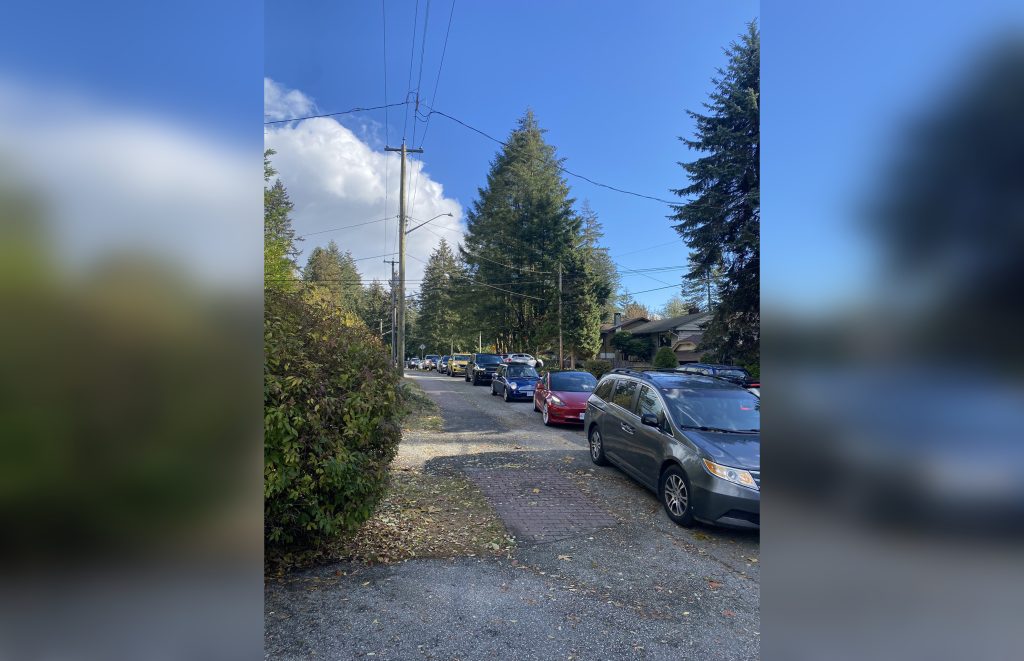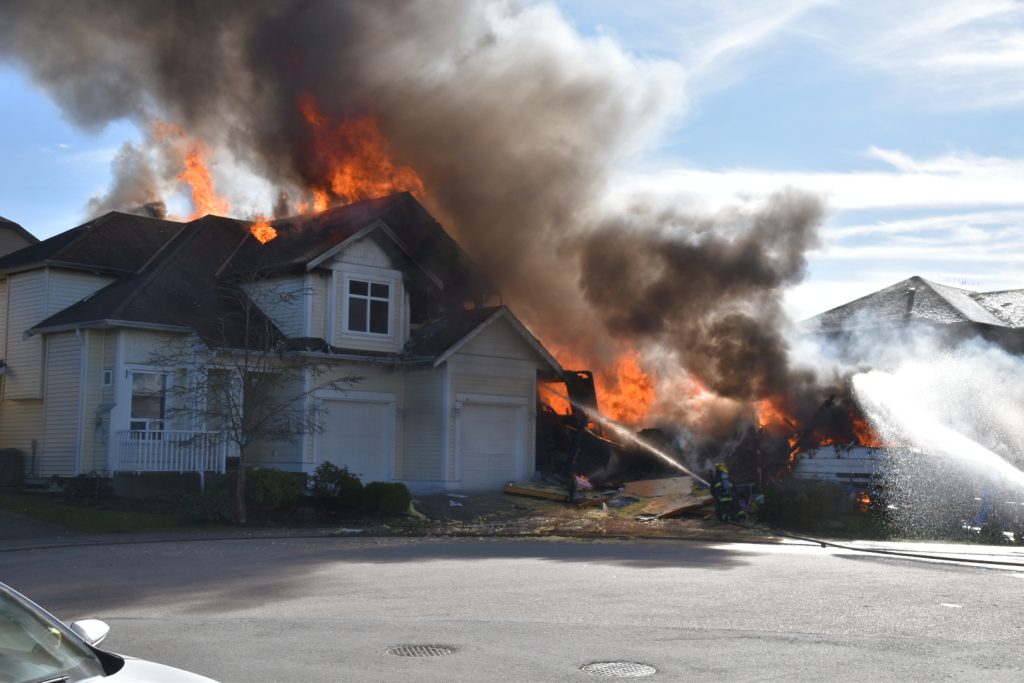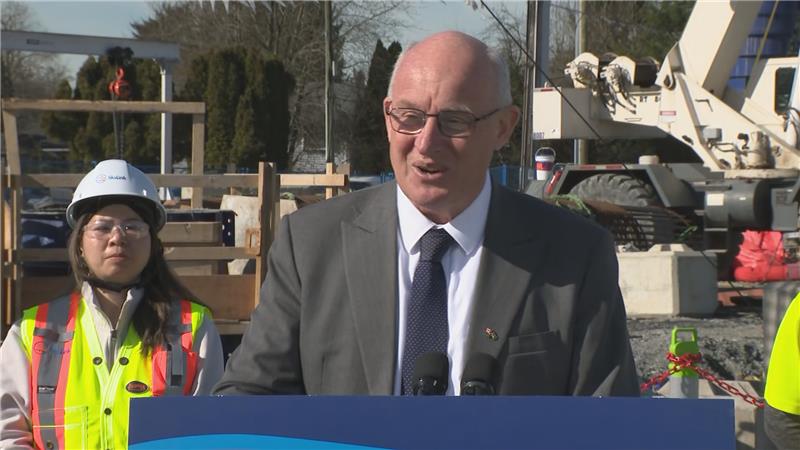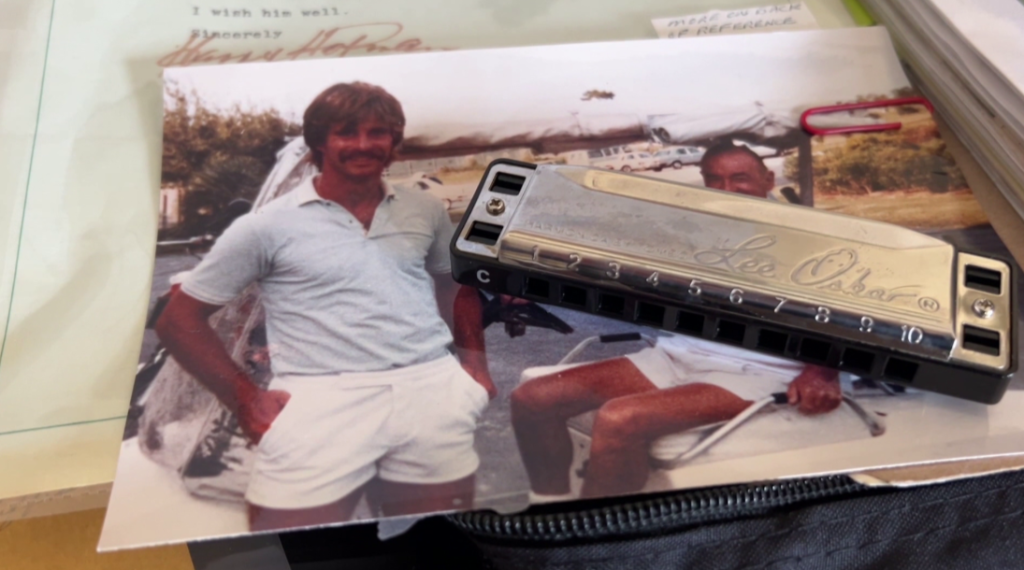Weekend North Shore gridlock raises questions about emergency response

Posted November 8, 2022 7:25 am.
Last Updated November 8, 2022 7:29 am.
A large portion of the North Shore ended up gridlocked over the weekend because of a major BC Hydro repair after the big windstorm, resulting in hours and hours of traffic backups.
The region east of the Seymour River to Deep Cove was behind a bottleneck after a section of Mt. Seymour Parkway was shut down for BC Hydro crews from Friday night to early Saturday evening — one of only two routes in and out of the area.
District of North Vancouver Mayor Mike Little says there were some other extraordinary factors that added to the backups, which stretched nearly five kilometres along Dollarton Highway to the Trans Canada by late Saturday afternoon.
“There’s no question that what I heard from people online is that they didn’t know ahead of time that there was a major blockage. Getting better communication out as quickly as we can assist. We did get sign boards up on either side of it but at that point, people were already getting trapped,” he tells CityNews.
Related Articles:
-
Power restored to most of province after windstorm: BC Hydro
-
Multiple weather warnings in B.C. for snow, cold conditions
-
Cleanup underway after ‘significant’ wind storm hits B.C.
Little believes sunny day crowds added to the backups, which were exacerbated by the outage of the metered traffic light that allows North Shore traffic to easily merge onto the Ironworkers Memorial Bridge.
“That blocked people who weren’t even intending to go over the bridge, so that became a challenge to clear as well.”
Little says getting control of that traffic signal and others close to Highway 1 sooner would have helped, but they are controlled by the province and it took more time to get flag people out.
“Every intersection that is within about 400 metres of a highway onramp is controlled by the province … it’s not controlled by the District of North Vancouver,” he explains. “So we have to get permission to take over control of those areas in the event of an emergency.”
Significant investment in emergency modelling
So if there was this kind of trouble after a windstorm — or even the backups we see when there’s an accident on a North Shore bridge — what would happen in a major emergency or disaster?
Emily Dickens with North Shore Emergency Management (NSEM) says they have done a lot of modelling of how to evacuate every part of the region from West Vancouver to the City and District of North Vancouver.
“There’s been significant investment into this work over the past five years or so. We actually have an evacuation calculator which helps us map out the time of day, spaces of congestion, demographics in terms of how many people are living in a neighbourhood, and maybe even some vulnerabilities limiting mobility,” she explains.
“We use that to draw up a picture of what it looks like to evacuate specific parts of the North Shore and how long it takes. We can weigh that against the risk and disaster that we are facing.”
Dickens says NSEM is working with the provincial Ministry of Transportation and Infrastructure, along with all three North Shore municipalities, to ensure disaster response routes are accessible in an emergency, though she admits congestion is inevitable.
Car free Mt Seymour Parkway!
An act of god did what a million years of car brained city councils could never. pic.twitter.com/0wyrlujvzd
— Easton “zoning cost workers ~$9k per year” Smith (@EastonLSmith) November 6, 2022
“If everybody congregates and moves in one direction, we are going to experience a period of gridlock. In a disaster situation, we really need to think about how we are staging an evacuation and how we are providing public messaging and information so people can evacuate in the safest and most effective way possible.”
She says they also work and train with first responders to help move traffic and close routes when needed.
When it comes to getting urgent evacuation route messages out to the public, NSEM promotes the use of the Alertable app and will also use radio and other social media to spread information.
“We can use [Alertable] to push emergency information into people’s cell phones so they can know which route is best to use, where we are seeing pinch points and get information out in a meaningful way so people can respond to changing situations.”
Dickens, along with Mayor Little, say there are always lessons to be learned from the kind of traffic chaos seen on Saturday, particularly when it comes to keeping people informed in the event of an emergency.
“I think it’s really important to keep people aware, keep them informed, so they can choose to stay off the roads or make alternate plans. If we can minimize the disruption for people who don’t need to be on the roads, that’s obviously the best scenario. The best way to do that is to communicate very clearly and get that information into the hands of people who need it.”








